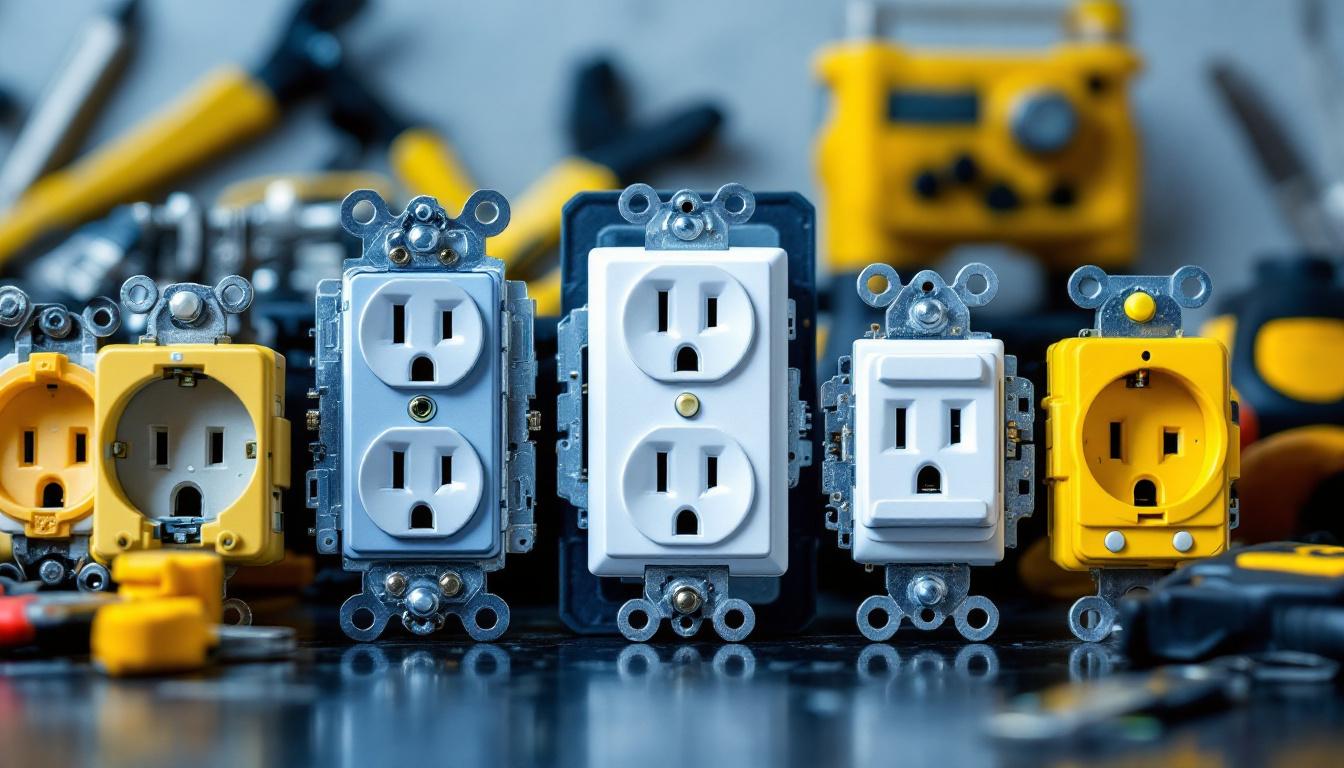
Lighting projects can be complex endeavors that require careful planning and execution. For lighting contractors, understanding the nuances of the industry is essential to delivering successful outcomes. Eiko Lighting, a leader in innovative lighting solutions, emphasizes the importance of avoiding common pitfalls that can lead to costly mistakes. This article explores strategies to help contractors navigate the lighting project landscape effectively.
One of the first steps in any lighting project is to clearly define the scope. This involves understanding the client’s needs, the space being illuminated, and the specific goals of the project. A well-defined scope not only sets the foundation for the project but also helps in managing expectations. It serves as a roadmap that guides all subsequent decisions, ensuring that the project remains aligned with the client’s vision while adhering to budgetary constraints and timelines.
Engaging with clients from the outset is crucial. This means asking detailed questions about their vision, budget, and any specific requirements they may have. By fostering open communication, contractors can gain valuable insights that will inform the design and execution phases. Additionally, understanding the client’s preferences regarding style and ambiance can lead to more personalized solutions. For instance, a client may prefer warm, inviting lighting for a residential space, while a commercial client might prioritize bright, functional lighting that enhances productivity.
A site assessment is indispensable in understanding the unique characteristics of the space. Factors such as existing lighting conditions, architectural features, and the intended use of the area must be considered. This assessment will help in selecting the right fixtures and ensuring that the lighting design enhances the overall environment. During the site visit, it’s also beneficial to take note of how natural light interacts with the space throughout the day. This can influence decisions on artificial lighting placement and intensity, ensuring a harmonious balance that maximizes both functionality and aesthetic appeal.
Moreover, understanding the technical aspects of the site, such as electrical capacity and wiring layouts, is essential for a seamless installation process. This can prevent potential issues down the line, such as flickering lights or overloaded circuits. By addressing these technical details early in the project, contractors can ensure that the lighting solutions are not only visually appealing but also practical and sustainable. This thorough groundwork lays the groundwork for a successful project that meets both the immediate and long-term needs of the client.
Selecting appropriate lighting solutions is a critical aspect of any project. With a plethora of options available, it can be overwhelming to determine which products will best meet the project’s requirements. The right lighting can transform a space, enhancing both its functionality and visual appeal. Therefore, taking the time to assess various factors will ensure that the final outcome aligns with the intended design vision.
energy efficiency should be a top priority when selecting lighting solutions. Not only does it contribute to sustainability, but it also reduces operational costs for clients. LED fixtures, for instance, are a popular choice due to their long lifespan and low energy consumption. Contractors should stay informed about the latest technologies and products that enhance energy efficiency. Additionally, utilizing smart lighting systems can further optimize energy use, allowing for automated adjustments based on occupancy and natural light levels. This not only promotes eco-friendliness but also enhances user comfort and convenience.
While energy efficiency is important, aesthetics and functionality must also be taken into account. The chosen lighting should complement the architecture and interior design of the space. For instance, ambient lighting creates a warm atmosphere, while task lighting is essential for specific activities. Balancing these elements will lead to a more cohesive and effective lighting design. Furthermore, incorporating dimmable options can provide versatility, allowing users to adjust the brightness according to the time of day or specific events. This adaptability not only enhances the overall experience but also allows for a seamless transition between different functions of the space, making it more inviting and user-friendly.
Moreover, the placement of lighting fixtures plays a crucial role in achieving the desired effect. Strategic positioning can highlight architectural features, create focal points, or even expand the perceived dimensions of a room. For example, wall sconces can add depth and character, while recessed lighting can provide a clean, modern look. It’s essential to consider the interplay between light and shadow, as this can dramatically influence the mood and functionality of a space. By thoughtfully integrating various lighting types and placements, designers can create an environment that is not only visually stunning but also highly functional for its intended use.
Once the lighting solutions have been selected, the next step is planning for installation. This phase requires meticulous attention to detail to avoid complications that could lead to delays and additional costs.
A comprehensive installation plan outlines each step of the process, from preparation to final adjustments. This plan should include timelines, resource allocation, and a checklist of necessary tools and materials. Having a clear roadmap helps ensure that everyone involved is on the same page and can work efficiently. Additionally, it is beneficial to incorporate contingency plans that account for potential setbacks, such as delays in material delivery or unexpected site conditions. By anticipating these challenges, the installation team can maintain momentum and adapt quickly without derailing the entire project.
In many projects, lighting contractors must collaborate with other trades, such as electricians, general contractors, and interior designers. Effective coordination is essential to avoid conflicts and ensure that all aspects of the project align seamlessly. Regular meetings and updates can help keep everyone informed and on track. Furthermore, utilizing project management software can enhance communication among contractors by providing a shared platform for updates, schedules, and documentation. This transparency not only fosters teamwork but also helps in tracking progress and addressing any issues that may arise in real time. By ensuring that all parties are aligned, the installation process can proceed smoothly, ultimately leading to a successful project outcome.
Testing and quality assurance are vital components of the lighting project lifecycle. Ensuring that the installed lighting meets the specified standards and performs as intended can prevent costly rework later on.
Before the final installation, it is advisable to conduct pre-installation testing of the lighting fixtures. This allows contractors to verify that the products function correctly and meet the project’s specifications. Addressing any issues at this stage can save time and resources in the long run.
Establishing a quality control process during installation ensures that all work meets the required standards. This may involve regular inspections and checklists to confirm that each fixture is installed correctly and operates as intended. A proactive approach to quality control can significantly reduce the likelihood of errors.
Managing the budget effectively is crucial for the success of any lighting project. Cost overruns can jeopardize the project’s viability and lead to strained client relationships.
Creating a realistic budget involves not only accounting for the cost of materials and labor but also anticipating potential contingencies. It is wise to include a buffer for unexpected expenses that may arise during the project. This approach helps in maintaining financial control and ensuring that the project remains within budget.
Regularly monitoring expenses throughout the project allows contractors to identify any discrepancies early on. By keeping track of costs in real-time, contractors can make informed decisions and adjust their approach if necessary. This proactive management helps in avoiding budget overruns and ensures financial accountability.
Once the project is completed, providing post-installation support is essential for maintaining client satisfaction. This phase can significantly impact the overall success of the project and the contractor’s reputation.
Offering maintenance and support services demonstrates a commitment to quality and customer care. Contractors should provide clients with information on how to care for their new lighting systems and offer assistance if any issues arise. This ongoing relationship can lead to repeat business and referrals.
Soliciting feedback from clients after project completion is invaluable for continuous improvement. Understanding what worked well and what could be enhanced helps contractors refine their processes and offerings. This feedback loop is essential for staying competitive in the lighting industry.
The lighting industry is constantly evolving, with new technologies and trends emerging regularly. Staying informed about these changes is crucial for contractors who want to remain competitive and deliver the best solutions to their clients.
Participating in industry conferences and workshops provides contractors with opportunities to learn about the latest advancements in lighting technology and design. Networking with peers and industry experts can also lead to valuable insights and collaborations. Engaging in continuous education helps contractors stay ahead of the curve.
Subscribing to industry publications and following reputable online resources can keep contractors informed about trends, best practices, and emerging technologies. Staying updated on these developments enables contractors to make informed decisions and offer cutting-edge solutions to their clients.
Lighting projects present unique challenges, but with careful planning and execution, contractors can avoid costly mistakes. By understanding the project scope, selecting the right lighting solutions, and implementing effective management strategies, contractors can deliver successful outcomes that meet client expectations. Eiko Lighting emphasizes the importance of continuous learning and adaptation in this dynamic industry. By staying informed and committed to quality, lighting contractors can thrive in their projects and build lasting relationships with clients.
Ready to elevate your lighting projects while keeping costs in check? At LumenWholesale, we’re committed to providing you with the highest quality, spec-grade lighting products at prices that respect your bottom line. Say goodbye to local distributor markups and hello to our extensive selection that meets rigorous industry standards. With free shipping on bulk orders, you can trust that you’re getting premium lighting solutions at the best value, with no hidden fees. Let us help you make your next project a shining success. Discover the LumenWholesale difference and take the first step towards a brighter future. Wholesale Lighting at the Best Value.

Discover the critical role fluorescent light fixtures play in the success of lighting contractors.

Discover the essential facts about automatic outdoor light timers in this comprehensive guide tailored for lighting contractors.

Discover essential insights and expert advice for lighting contractors on optimizing house security lights.

Discover the different electrical outlet types in the United States and their importance for lighting contractors.